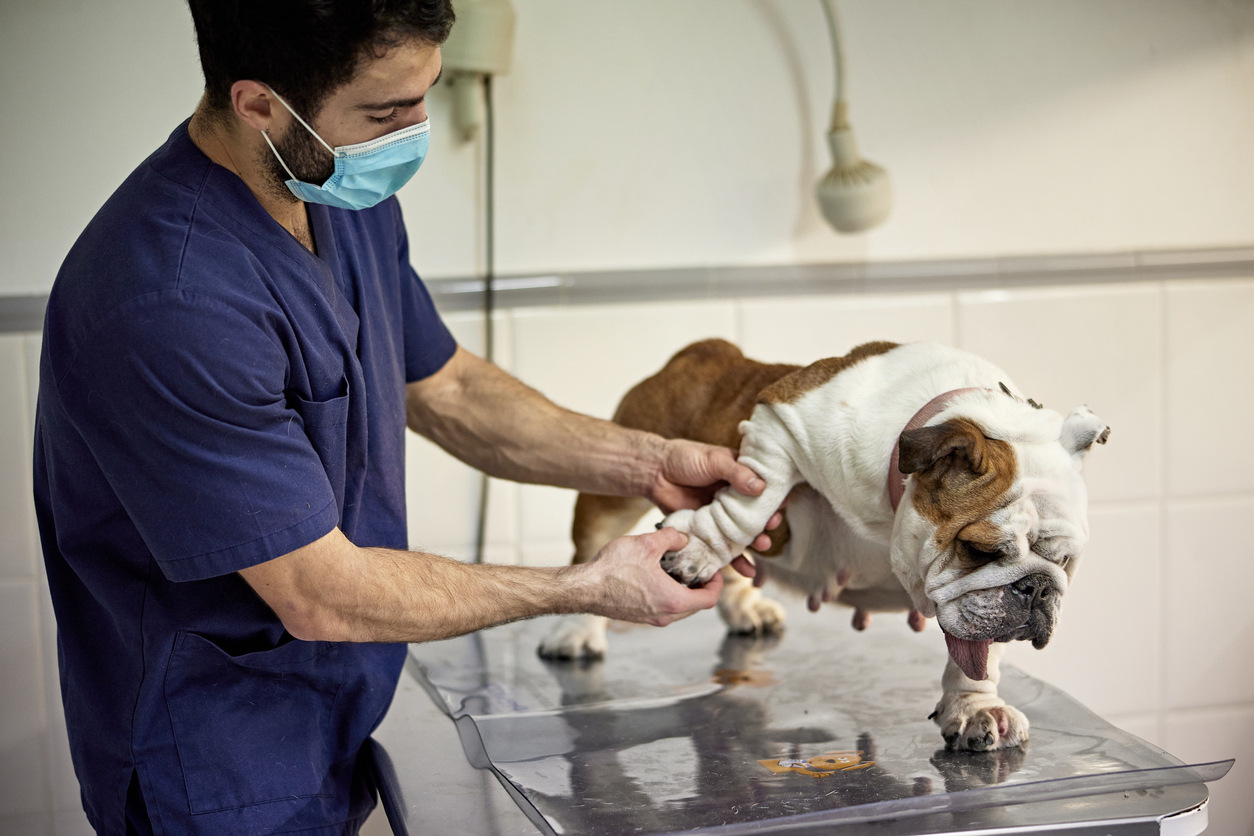
Elbow dysplasia is a common condition affecting many dogs, especially larger breeds. But what exactly is it? Elbow dysplasia refers to a group of developmental abnormalities in a dog's elbow joint, leading to pain, lameness, and arthritis. Understanding this condition can help dog owners recognize symptoms early and seek appropriate treatment. In this post, we'll share 21 facts about elbow dysplasia that every dog owner should know. From causes and symptoms to treatment options and prevention tips, these facts will equip you with the knowledge to better care for your furry friend. Let's dive into the world of elbow dysplasia and uncover what you need to know.
Key Takeaways:
- Elbow dysplasia is a genetic disorder in dogs, causing pain and stiffness in the elbow joint. Early detection and proper management are crucial for a happy and active pup!
- Prevention strategies, such as balanced diet and responsible breeding, can help reduce the risk of elbow dysplasia in dogs. Regular vet check-ups and controlled exercise are also important for a healthy pup!
What is Elbow Dysplasia?
Elbow dysplasia is a common orthopedic condition in dogs, particularly large breeds. It involves abnormal development of the elbow joint, leading to pain and lameness. Understanding this condition can help in early detection and treatment.
-
Elbow dysplasia is a genetic disorder. Breeds like German Shepherds, Golden Retrievers, and Labradors are more prone to it due to inherited traits.
-
Four main conditions fall under elbow dysplasia: fragmented coronoid process (FCP), osteochondritis dissecans (OCD), ununited anconeal process (UAP), and elbow incongruity. Each affects different parts of the elbow joint.
-
Symptoms often appear between 4 to 10 months of age. Early signs include limping, stiffness, and reluctance to play or exercise.
Causes and Risk Factors
Understanding the causes and risk factors can aid in prevention and management. Genetics play a significant role, but other factors contribute as well.
-
Rapid growth in puppies can exacerbate the condition. Overfeeding and high-calorie diets can lead to faster growth, putting stress on developing joints.
-
Obesity is a significant risk factor. Excess weight increases the load on the elbow joints, worsening the symptoms and progression of dysplasia.
-
Trauma or injury to the elbow joint during the puppy stage can trigger or worsen elbow dysplasia. Rough play or accidents can be culprits.
Diagnosis and Detection
Early diagnosis is crucial for effective treatment. Vets use various methods to identify elbow dysplasia.
-
X-rays are commonly used to diagnose elbow dysplasia. They help visualize bone abnormalities and joint incongruities.
-
CT scans provide a more detailed view of the elbow joint. They are particularly useful for detecting subtle changes not visible on X-rays.
-
Arthroscopy is a minimally invasive procedure allowing direct visualization of the joint. It helps in both diagnosis and treatment.
Treatment Options
Treatment varies depending on the severity of the condition. Both surgical and non-surgical options are available.
-
Weight management is crucial. Keeping a dog at a healthy weight reduces stress on the joints and alleviates symptoms.
-
Physical therapy can improve joint function and reduce pain. Exercises like swimming and controlled walking are beneficial.
-
Anti-inflammatory medications help manage pain and inflammation. They are often prescribed alongside other treatments.
-
Surgery may be necessary for severe cases. Procedures like arthroscopy, osteotomy, or joint replacement can provide relief and improve mobility.
Living with Elbow Dysplasia
Managing elbow dysplasia requires ongoing care and attention. Lifestyle adjustments can make a significant difference.
-
Regular vet check-ups are essential. Monitoring the condition helps in adjusting treatment plans as needed.
-
Joint supplements like glucosamine and chondroitin can support joint health. They are often recommended as part of a comprehensive treatment plan.
-
Comfortable bedding is important. Soft, supportive beds reduce pressure on the joints and provide relief.
-
Controlled exercise is key. Avoid high-impact activities and opt for low-impact exercises to keep the dog active without worsening the condition.
Prevention Strategies
While genetic factors can't be changed, certain strategies can help reduce the risk of elbow dysplasia.
-
Breeding practices play a crucial role. Responsible breeders screen for elbow dysplasia and avoid breeding affected dogs.
-
Balanced diet is essential for growing puppies. Proper nutrition supports healthy development and reduces the risk of joint problems.
-
Avoid over-exercising young dogs. Excessive running or jumping can stress developing joints and contribute to dysplasia.
-
Regular vet visits during the puppy stage can help in early detection. Vets can provide guidance on diet, exercise, and overall health to minimize risks.
Understanding Elbow Dysplasia
Elbow dysplasia affects many dogs, causing pain and mobility issues. Knowing the symptoms like limping, stiffness, or reluctance to play helps in early detection. Breeds like German Shepherds, Golden Retrievers, and Rottweilers are more prone to this condition. Regular vet check-ups and maintaining a healthy weight can prevent or manage elbow dysplasia. Treatments range from medication to surgery, depending on severity.
Exercise and physical therapy can improve your dog's quality of life. Always consult your vet before starting any treatment plan. Being informed about elbow dysplasia ensures your furry friend gets the best care possible.
By staying vigilant and proactive, you can help your dog lead a happy, active life despite this condition. Remember, early intervention makes a significant difference. Keep an eye out for any signs and act promptly. Your dog will thank you!
Frequently Asked Questions
Was this page helpful?
Our commitment to delivering trustworthy and engaging content is at the heart of what we do. Each fact on our site is contributed by real users like you, bringing a wealth of diverse insights and information. To ensure the highest standards of accuracy and reliability, our dedicated editors meticulously review each submission. This process guarantees that the facts we share are not only fascinating but also credible. Trust in our commitment to quality and authenticity as you explore and learn with us.
